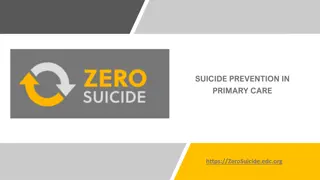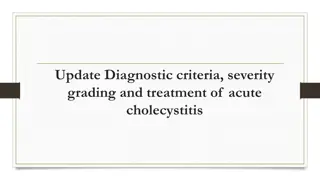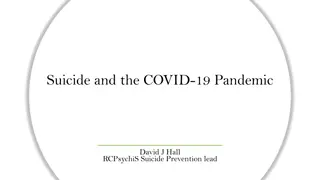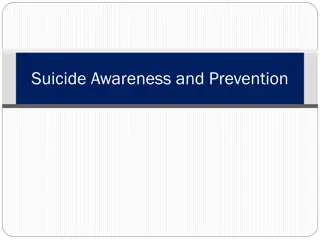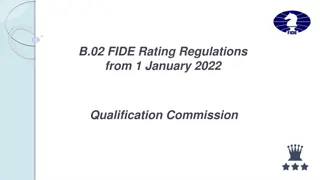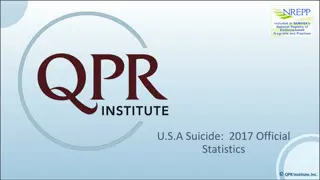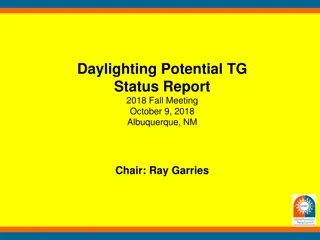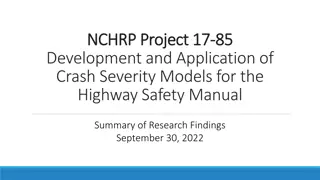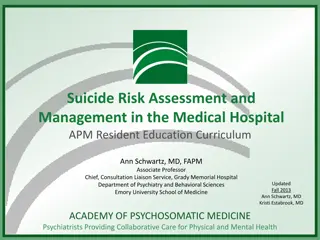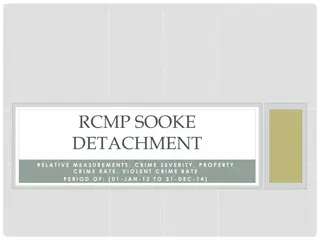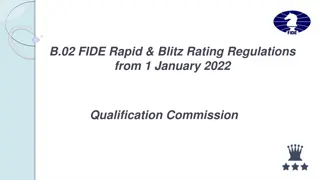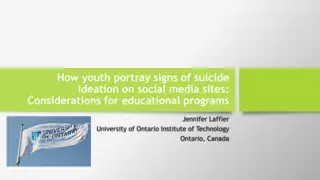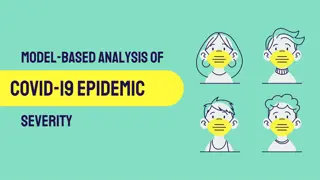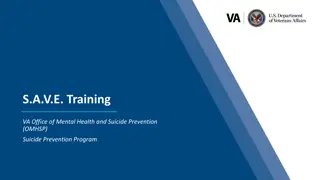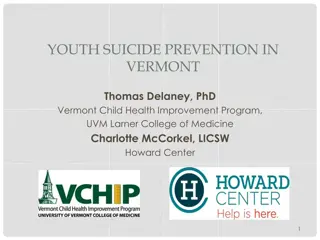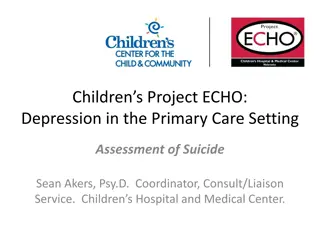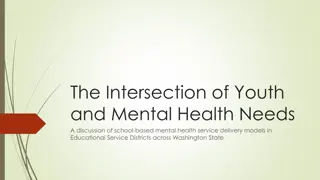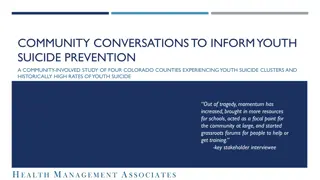Understanding the Columbia Suicide Severity Rating Scale (C-SSRS)
The Columbia Suicide Severity Rating Scale (C-SSRS) is an evidence-based suicide risk screening tool recommended by the Joint Commission. It is vital for identifying patients at risk of suicide, given the alarming rise in suicide rates. This tool helps healthcare professionals assess and address suicidal ideation effectively, with clear guidelines on necessary actions based on patient responses to specific questions.
Download Presentation

Please find below an Image/Link to download the presentation.
The content on the website is provided AS IS for your information and personal use only. It may not be sold, licensed, or shared on other websites without obtaining consent from the author. Download presentation by click this link. If you encounter any issues during the download, it is possible that the publisher has removed the file from their server.
E N D
Presentation Transcript
What is it? The Columbia Suicide Severity Rating Scale (C-SSRS) is an evidence-based suicide risk screening assessment tool recommended in the Joint Commission Best Practice Library. Mental health training is not required to administer the screening Successfully used for screening by hospitals, outpatient areas, first responders, military Built into Epic exactly as it is designed 2
Why do it? Identifying patients at risk for suicide is one of the 2017 Joint Commission National Patient Safety Goals (NPSG.15.01.01) Highest suicide rates in the nation in 30 years 10th leading cause of death in the U.S. 2nd leading cause of death among those aged 10 24 3
How do I do it? The scale is completed upon entry to the hospital Ask the questions exactly as they are written Some questions (2 and 6) only cascade open if a patient answers yes to a previous question. 4
How do I do it? Actions are required of you if the patient answers yes to a question. The Chart below describes your responsibility Use largest number question with a yes answer to drive action of care Question # Action for Yes Response Notify Case Manager/Social Worker to provide outpatient behavioral health information at discharge #1 Notify Case Manager/Social Worker to provide outpatient behavioral health information at discharge #2 Contact Psychiatric RN Liaison #3 Ask admitting service to assess patient safety; suggest psychiatric consult #4 Initiate 1:1, ask admitting service to order psych consult (required) DETAILED ON THE NEXT SLIDE #5 < 1 week: initiate 1:1, ask admitting service to order psychiatric consult 1 week 3 months: Contact Psychiatric RN Liaison > 3 months, notify Case Manager/Social Worker to provide outpatient behavioral health information at discharge #6 5
How do I do it? Question #5 addresses active suicidal ideation with a plan and intent to act. Have you started to work out or worked out the details of how to kill yourself? Do you intend to carry out this plan If a patient answers yes to question 5: 1. Initiate a safety assistant 2. Alert the physician 3. Ask him or her to enter an order for: 1. Suicide risk 2. 1:1 monitoring 3. A psychiatric consult. 6
Question Your patient answers yes to questions 1, 2, and 3 on screening, but no to 4, 5, and 6. What do you do? a. Put the patient with a 1:1 safety assistant b. Call/page the psych nurse liaison c. Notify Case Management d. A and C Question # Action for Yes Response Notify Case Manager/Social Worker to provide outpatient behavioral health information at discharge #1 Notify Case Manager/Social Worker to provide outpatient behavioral health information at discharge #2 Contact Psychiatric RN Liaison #3 Ask admitting service to assess patient safety; suggest psychiatric consult #4 Initiate 1:1, ask admitting service to order psych consult (required) #5 < 1 week: initiate 1:1, ask admitting service to order psychiatric consult 1 week 3 months: Contact Psychiatric RN Liaison > 3 months, notify Case Manager/Social Worker to provide outpatient behavioral health information at discharge #6 7
References Centers for Disease Control and Prevention. (2016). Leading Causes of Death. Retrieved from https://www.cdc.gov/nchs/fastats/leading-causes- of-death.htm National Alliance on Mental Illness. (2017). Risk of Suicide. Retrieved from http://www.nami.org/Learn-More/Mental-Health-Conditions/Related- Conditions/Suicide National Alliance on Mental Illness. (2017). Mental Health by the Numbers. Retrieved from http://www.nami.org/Learn-More/Mental-Health- By-the-Numbers The Columbia Lighthouse Project. (2016). About the Scale. Retrieved from http://cssrs.columbia.edu/the-columbia-scale-c-ssrs/about-the-scale/ The Joint Commission. (2017). Hospital National Patient Safety Goals. Retrieved from https://www.jointcommission.org/assets/1/6/2017_NPSG_HAP_ER.pdf 8


